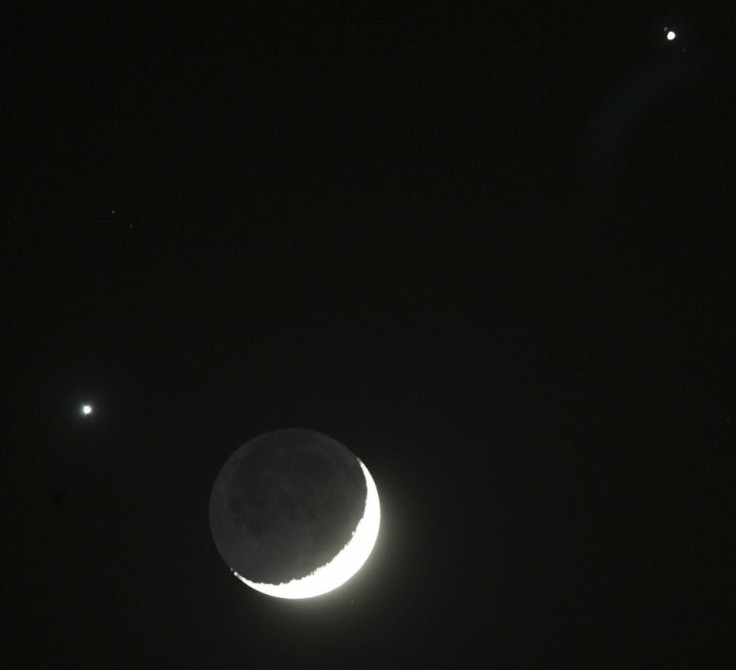Jupiter, Venus & Moon Visible This Weekend: What Time Will You Be Able To See The Planets?

The sky is set to awe the people of Earth this weekend. Venus and Jupiter, the two brightest planets will be in view with a crescent moon on Saturday Feb. 25 and Sunday Feb. 26. They will be visible from anywhere in the world when they all converge in a triple conjunction.
The event will begin at sunset, which on Saturday will be 5:42 p.m. On Sunday the sun will set at 5:43 p.m. If skies are cloudy in your area, the Slooh Space Camera will be broadcasting the sky live starting at 9:30 p.m. on both nights.
At 1:00 p.m. on Saturday you may be able to have a sneak peak of Venus. The planet will look like a white spot in the sky right below the crescent moon, which will be roughly two-thirds up.
According to Denise Chow of Space.com, on Saturday Venus will be closer to the moon, but on Sunday Jupiter will move closer. Viewers will also have a brief view of the planet Mercury as well. If sky conditions are clear, the planet should be beneath Venus, but will disappear shortly after sunset. The website also says that the mars will be rising in the east a few hours after sunset.
Venus, also called the Queen of the Sky, shines so bright that it can even be seen in the daytime. Space.com says that the Queen planet is so bright that it outshines any object in the sky except for the moon.
Jupiter, the largest planet in the Solar System is classified as a gas giant. The planet is surrounded by a faint planetary ring system, as well as a powerful magnetosphere.
Chow told CTV's Canada AM that this truly isn't a common experience. These things happen based on orbits of planets so every so often two planets will line up and the moon will line up with one of the other planets, said Chow. They're not as rare as a total solar eclipse but they are really neat.
© Copyright IBTimes 2024. All rights reserved.






















